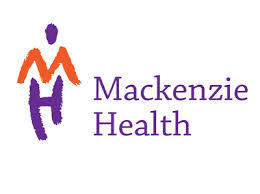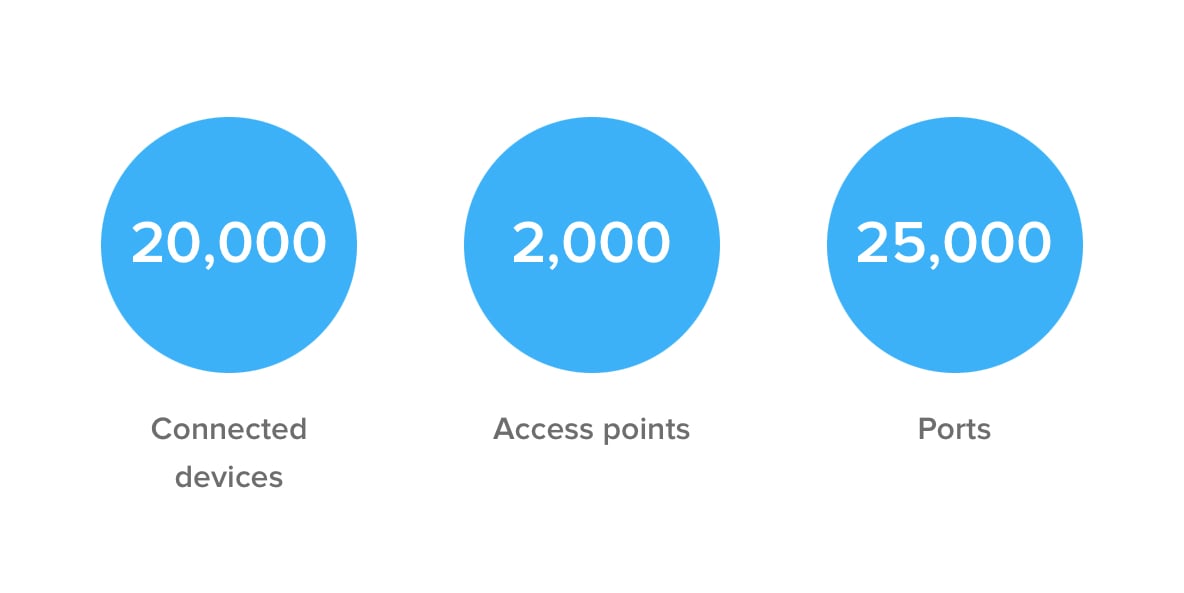

HIGHLIGHTS
-
Infrastructure built around the technology that enabled a truly smart hospital
-
Automated workflows enable rapid response to hospital events
-
Medical data streamed throughout the facility across all devices for instant access to patient records
THE BUSINESS CHALLENGE
Mackenzie Health had a vision of delivering world-class care to patients by putting them at the centre of everything the hospital does. The leadership at Mackenzie began by asking “How are we going to recreate healthcare?” to facilitate this vision. As a brand-new facility, there was an opportunity to reimagine what a hospital does and how it caters to the needs of its patients. The path to materializing this vision was the strategic use of the latest technology.
The technology itself was only part of the answer. An even bigger part of the equation is the workflow – a sequence of tasks done to respond to a specific event in a healthcare environment. Without a well-thought-out process, a clear workflow that allowed each piece of technology in that path to pass information back and forth, and an ability for all of that technology to “talk to each other,” none of this would work. Rather than simply adapt existing processes, workflows had to be revisited so that each scenario involving patient care was responded to in the most efficient way possible. Once the workflows had been formulated and finalized, Mackenzie Health needed the underlying technology capable of executing them.
The overall facility was also an enormous challenge. Mackenzie Health would need to upend the conventional way of building a hospital and change its approach completely. Smart technology would have to be ingrained in the very core of its operations, acting as one of its key foundations, not layered on once the hospital had finished construction. Typically, technology was addressed in the final phase of construction, treated as an ‘extra’ once the physical infrastructure was in place. For the facility Mackenzie had in mind, this would not work.
“We knew at the very beginning that we needed solid infrastructure to realize this vision,” Altaf Stationwala, President and CEO of Mackenzie Health, explained. “We wanted to use technology in the right way to give our patients and their families control in certain circumstances in a very high-stress situation,” he added.
To achieve this goal, a complex network comprised by stable, bidirectional connections between over 20,000 thousand devices would be required. For connectivity of this size and scale, there was a need for expert design assistance as it needed to be factored into the structural blueprint of the hospital. This construction scenario had not been seen before in the province.
The design team also wanted to reconsider how technology was utilized throughout the hospital by healthcare workers, which Mackenzie Health staff sometimes perceived as creating more problems than it solved. There was a sense that rather than making things simpler, the technology took time away from patients and was an obstacle in their work, rather than a tool to help them. In Mackenzie’s vision, it was crucial that the new hospital used technology in ways to support the important work of staff and their patients.
This was a hugely complex undertaking with few references to work from. Mackenzie Health was paving new ground in trying to achieve their vision of creating a supportive experience for patients, families and medical staff and the best possible care for patients.
SOLUTION
Having worked well with Compugen on their Richmond Hill facility in the past, Mackenzie Health chose the company to take on the lead technology partner role in the project and engineer a network capable of realizing their vision for CVH.
"We wanted to work with Compugen in taking this net-new hospital to the next level of technological integration,” Altaf explained.
The first requirement was a network robust and reliable enough to support thousands of devices – all generating, sending, and receiving data simultaneously. Compugen engaged longstanding partner Cisco to provide the technology for the hospital’s highly sophisticated IT architecture. “This project involved connecting everything,” Compugen Sales VP Jeremy Erlick commented. “What that looks like is three data centres, 75 wiring closets, 2,000 access points, 150 switches and 25,000 ports – all connected on a network that is stable enough to carry all those connections with zero downtime. These numbers are monumental and represent the biggest project we have ever embarked on,” he added.
Once the infrastructure was built, it had to be put to the test to ensure that everything worked the way it was supposed to. Each device and sensor needed to be able to communicate with each other as well as the electronic health record system (EHR) to enable all of the hospital’s smart functions. During the design phase, Compugen established a living lab to execute live proof-of-concept testing for all of the technology that was to be integrated into the system.
Within it, an ecosystem of partner-provided devices that were to be part of the final environment was set up and connected. Elements such as smart beds, hand hygiene systems, nurse call systems, and the many sensors and devices integrated into each patient room to monitor safety and health were all brought together to ensure they worked and communicated with each other effectively. It was a crucial step in an environment that was to house thousands of devices without interference, and it had to be flawless before deployment.
Digitizing the hospital did not mean just transitioning paper-based processes to electronic and stopping there. The most critical advantage of Mackenzie Health’s envisioned fully-digitized hospital was the workflows. Working with Vocera, a clinic communications and workflow solutions company, Compugen dove deep into the inner workings of operating a hospital from the medical staff’s perspective. In conversation with doctors, nurses, and other healthcare practitioners, Compugen helped identify their needs - what they needed to accomplish in their daily tasks – and then sought to figure out how technology could support and simplify.
Through these discussions Compugen gained insight that enabled the programming of various workflows that would automatically activate in specific scenarios, such as a code blue. For devices and sensors to accurately recognize certain events and determine when these workflows should be prompted, they needed access to a constant stream of data flowing throughout the entire network.
Right from the start, Compugen and Mackenzie Health also worked closely with Infrastructure Ontario on developing the approach to building this pioneering facility; embedding the technology as early as possible into a structure that was built around it, not the other way around. Ordinarily a general contractor controls every aspect of the construction, in this case, Mackenzie Health lobbied to pull the technology away, and then approached that aspect through a managed infrastructure service provider model so that it could be built independently and without compromise. This was the first time this model was used in any school or hospital in the province and allowed Mackenzie Health to achieve the level of functionality and sophistication that would not have been possible otherwise.
OUTCOME
The outcome of the project is a medical facility capable of delivering a world-class and pioneering patient-centred experience.
“We started from the ground up. We had to work with a clean sheet of paper and said, ‘How do we make this a truly smart and innovative solution?’ The result is a patient experience like no other, from the moment patients check in, to the experience they have while receiving treatment, to the moment they are being discharged,” Rob Campagna, VP Public Sector Sales and Operations at Cisco Canada, commented.
Introducing workflows has enabled access among nurses and physicians to a singular patient record that is updated in real-time by their inputs, as well as those from various monitoring devices in every hospital room, allowing them to act and make patient care decisions with lifesaving speed. In a code blue scenario, for example, nurses and clinicians are alerted on their mobile devices instantly so that they can attend to the emergency, with the hospital bed programmed to assume the standard position for a code blue and elevators instructed to prioritize transport of these practitioners to the patient.
Some workflows built into the system are preventative in nature depending on a patient’s condition and status. In cases where falls are a concern, patients are placed in beds embedded with sensors that can monitor and detect when they make sudden movements, or change position allowing medical staff to promptly mitigate any potential fall-induced injuries. Patients who may be at risk if they wander outside of their rooms are tagged so that nurses receive door ajar alerts and loitering alarms whenever the patient roams beyond the confines of their own room.
For their information and comfort, patients are provided access to the same system and can look up their own medical data, order food, turn down blinds or turn off lights through tablets deployed in every room.
Hospital equipment is tagged for its geolocation so that staff can pinpoint its location on the premises when misplaced.
The result of this massive project is a hospital that genuinely embodies patient care. Patients get treated more quickly and get in front of the right people at the right time. The technology and the care that it enables are designed to have an impact on the patient experience, in countless potentially lifesaving scenarios, and better serve the community.





.png)